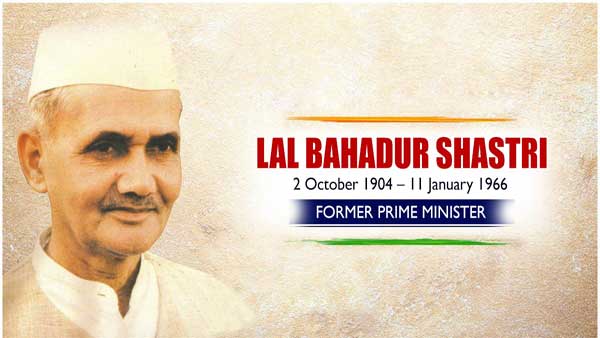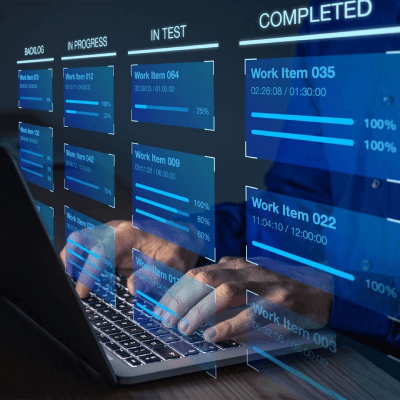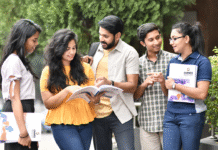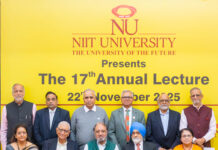Lal Bahadur Shastri was born on October 2, 1904 in Mughalsarai. And, of course, this year marks his birthday.
He had spent more than 30 years in the country and eventually became known as a man of integrity and talent. He was a man of great inner strength, humility and perseverance. He understood the language of the people and was a man of vision for the progress of the world.

Important Announcement – EasyShiksha has now started Online Internship Program “Ab India Sikhega Ghar Se”

Brief Biography
Lal Bahadur Shastri studied at East Central Railway Inter College in Mughalsarai and Varanasi. He graduated from Kashi Vidyapeeth in 1926. She was awarded the title “Shastri” meaning “Scholar” by Vidya Peeth as part of her bachelor’s degree award. But this title came to his name. Shastri was heavily influenced by Mahatma Gandhi and Tilak.
He married Lalita Devi on May 16, 1928. He became a lifelong member of the Servants of the People Society (Lok Sevak Mandal), founded by Lala Lajpat Rai. There he began working for the promotion of retiring classes, and later became the President of the Society.
In the 1920’s, Shastri ji joined the Indian Independence Movement, in which he participated in a non-aligned movement. He was briefly sent to prison by the Britishers.
Top Courses in Software Engineering
Political Achievements
Post Independent Independent, Lal Bahadur Shastri became Secretary of Parliament in the U.P. He also became Minister of Police and Transport in 1947. As Minister of Transport, she had appointed female drivers for the first time. As the Minister in charge of the Police Department, he has passed a directive that the police should use water jets and not latrines to disperse the mob.
In 1951, Shastri was appointed General Secretary of the All-India Congress Committee, and he succeeded in carrying out advertising and other election-related activities. In 1952, he was elected to Rajya Sabha of the U.P. As Minister of Railways, he installed the first machine at the Integral Coach Factory in Chennai in 1955.
In 1957, Shastri again became Minister of Transport and Communications, and also Minister of Trade and Industry. In 1961, he was appointed Minister of the Interior, and he appointed the Anti-Corruption Committee. He built the famous “Shastri Formula” which included language riots in Assam and Punjab.
Q. Are EasyShiksha's internships truly free?
Yes, all internships offered by EasyShiksha are completely free of charge.
Q. How can I apply for an internship with EasyShiksha?
You can apply by visiting our website, browsing available internships, and following the application instructions provided.
Q. What types of internships are available through EasyShiksha?
EasyShiksha offers a wide range of internships across technology, business, marketing, healthcare, and more. Opportunities are continuously updated.
Q. Will I receive a certificate upon completing an internship?
Yes, upon successful completion, you will receive a certificate recognizing your participation and achievements.
Q. Are EasyShiksha's internship certificates recognized by universities and employers?
Yes, the certificates are recognized by universities, colleges, and employers worldwide.
Q. Is the download of certificates free or paid?
Access to internships and courses is free, but there is a small fee to download certificates, covering administrative costs.
Q. When can I start the course?
You can choose any course and start immediately without delay.
Q. What are the course and session timings?
These are fully online courses. You can learn at any time and pace. We recommend following a routine, but it depends on your schedule.
Q. What will happen when my course is over?
After completion, you will have lifetime access to the course for future reference.
Q. Can I download the notes and study material?
Yes, you can access and download course materials and have lifetime access for future reference.
Q. What software/tools would be needed for the course?
All necessary software/tools will be shared during the training as needed.
Q. I’m unable to make a payment. What should I do?
Try using a different card or account. If the problem persists, email us at info@easyshiksha.com.
Q. Do I get the certificate in hard copy?
No, only a soft copy is provided, which can be downloaded and printed if required.
Q. The payment got deducted but shows “failed”. What to do?
Technical errors may cause this. The deducted amount will be returned to your account in 7-10 working days.
Q. Payment was successful but dashboard shows ‘Buy Now’?
Sometimes payment reflection is delayed. If it takes longer than 30 minutes, email info@easyshiksha.com with the payment screenshot.
Q. What is the refund policy?
If you face technical issues, you can request a refund. No refunds are issued once the certificate has been generated.
Q. Can I enroll in a single course?
Yes, select the course of interest, fill in the details, make payment, and start learning. You will also earn a certificate.
Q. My questions are not listed above. I need further help.
Contact us at info@easyshiksha.com for further assistance.
On June 9, 1964, Lal Bahadur Shastri became Prime Minister of India. He promoted the White Revolution, a national campaign to increase milk production. He also promoted the Green Revolution, increasing food production in India.
Although Shastri continued Nehru’s policy of non-alignment, he also formed ties with the Soviet Union. In 1964, he signed an agreement with Sri Lankan Prime Minister Sirimavo Bandaranaike, regarding the status of Indian Tamil in Ceylon. This agreement is known as the Sirimavo-Shastri Pact.
In 1965, Shastri officially visited Rangoon, Burma and re-established good relations with the military government of General Ne Win. During his tenure in India, he experienced another wave of violence in Pakistan in 1965. He gave the Liberation Front the freedom to retaliate and said “the League will be met with the League ” and gained popularity. The Indo-Pak War ended on September 23, 1965. On January 10, 1966, Russian Prime Minister Kosygin offered a mediation by Lal Bahadur Shastri and his Pakistani counterpart Ayub Khan to sign the Tashkent Declaration.
Death
Lal Bahadur Shastri died of a heart attack on January 11, 1966. He was awarded the Barat Ratna Prize for India’s highest social award after his death in 1966.
Lal Bahadur Shastri was known as a man of integrity and great ability. He was humble, enduring with great inner strength and understanding of the language of the common people. He was deeply influenced by the teachings of Mahatma Gandhi and was a man of vision who led the progressive world.
For more related content visit Easyshiksha and Hawkscode
ALSO READ: education-project-council-jharkhand-bharti-foundation-jointly
Get Course: Digital-Marketing-Fundamentals-SEO




































































